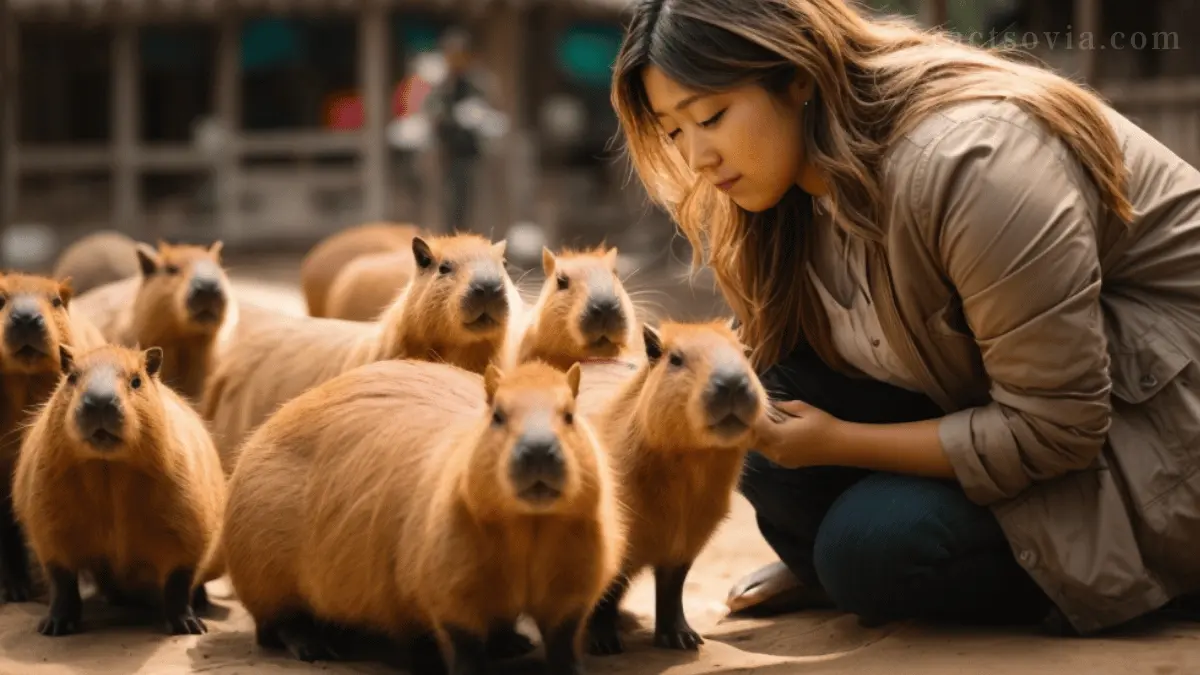We use affiliate links to run our site. When you buy through links on our site, we may earn an affiliate commission, without any added cost to you. Learn more
Capybaras, the largest rodents in the world, are natural wonders that continue to captivate both scientists and nature enthusiasts alike.
These amazing creatures are native to South America, specifically found in countries like Brazil, Venezuela, and Colombia. With an average length of around 4 feet and a weight of up to 150 pounds, capybaras truly live up to their title as nature’s giant rodents.
One of the most interesting aspects of capybaras is their unique family structure. Unlike most rodents, capybaras have a social nature and form complex groups called herds. These herds usually consist of around 10 to 20 individuals, led by a dominant male.
Capybaras are excellent communicators and use various vocalizations and body language to interact with each other. Despite their size, they are surprisingly gentle creatures, often seen forming close bonds with their herd members through grooming and physical contact.
Capybara Size Comparison: How Big Is A Capybara
Capybara: The Largest Rodent in the World
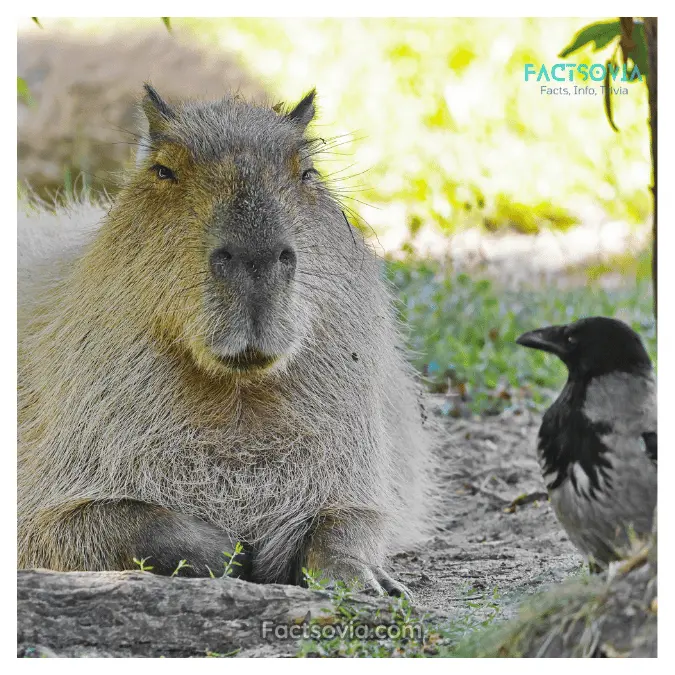
Capybara, renowned as the largest rodent in the world, is a fascinating creature. With a body length of up to four and a half feet and a weight of around 150 pounds, these gentle giants certainly stand out in the animal kingdom.
Native to South America, capybaras primarily inhabit marshes, swamps, and riverbanks, where they take advantage of their semi-aquatic nature.
Their unique physical attributes, such as webbed feet and dense fur, enable them to navigate effortlessly in water and regulate their body temperature.
These vegetarian rodents have a diverse diet consisting mainly of grasses, aquatic plants, and fruits. Their large incisors never stop growing, allowing them to constantly munch on vegetation.
Despite being herbivores, capybaras play an essential role in their ecosystems as seed dispersers. As they graze, they unknowingly scatter seeds through their feces, contributing to the growth and diversity of plant species in their habitat.
Additionally, their grazing activities also help control vegetation growth, preventing the overgrowth of certain plant species and maintaining a balanced ecosystem.
A Social Creature with a Unique Family Structure

Capybaras are known for their unique family structure, which sets them apart from other rodents. These social creatures live in large groups called herds, consisting of around 10 to 30 individuals.
Within the herd, there is a dominant male capybara, known as the alpha male, who leads and protects the group.
The alpha male is responsible for the safety and well-being of the entire herd, while the other members of the group follow his lead.
Capybaras have a strong bond with their family members. They engage in various social behaviors such as grooming, playing, and even sleeping together in a pile.
The herd offers protection against predators, and the capybaras demonstrate a remarkable level of cooperation and communication.
They use different vocalizations and body language to convey messages and maintain their social order. These fascinating creatures have truly unique family dynamics, making them a remarkable species to study and observe in the wild.
The Aquatic Life of a Semi-Aquatic Rodent
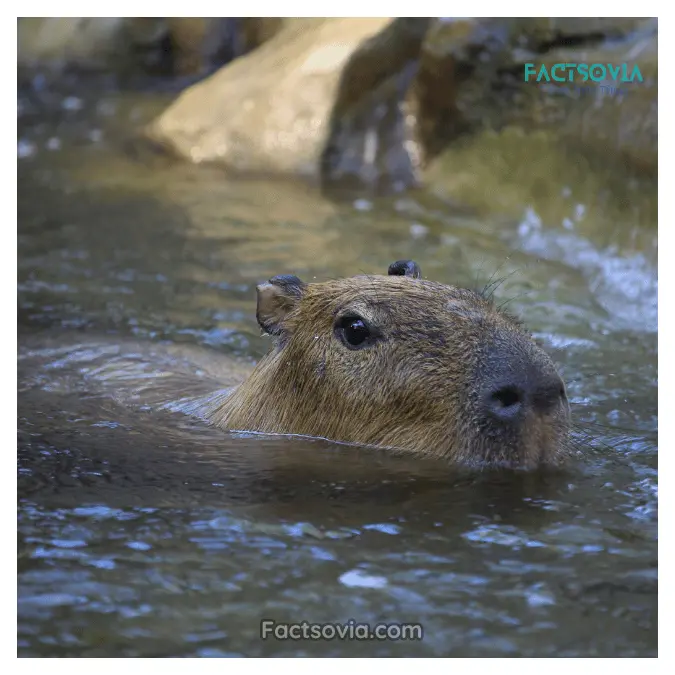
When you think of a semi-aquatic creature, you might imagine a graceful amphibian or a sleek swimming mammal. But have you ever heard of the capybara?
These fascinating creatures are the largest rodents in the world and are well-adapted to an aquatic lifestyle. Found in the marshes, swamps, and riverbanks of South America, capybaras are the ultimate masters of the water.
Their bodies are perfectly suited for life in the water. Capybaras have webbed feet that make them exceptional swimmers, allowing them to glide effortlessly through the water.
Their eyes, nostrils, and ears are positioned high on their heads, enabling them to keep a watchful eye on their surroundings while floating or swimming.
With a dense, waterproof coat, these semi-aquatic rodents can spend prolonged periods in the water without becoming waterlogged.
Whether they are escaping predators or searching for food, the capybara’s natural affinity for water is truly astonishing.
A Vegetarian Diet for the World’s Largest Rodent
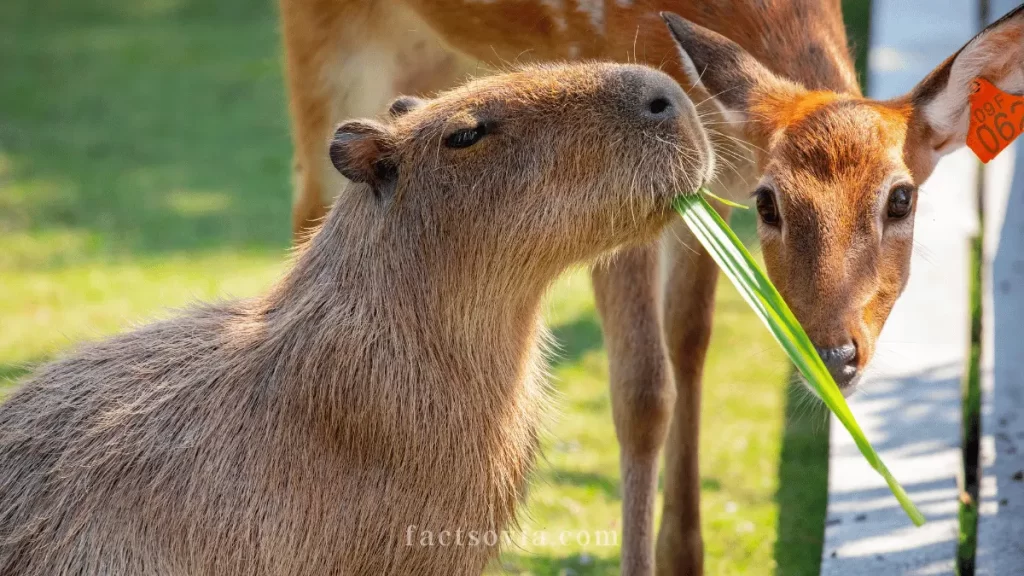
Capybaras, the largest rodents in the world, have a unique diet that consists entirely of plants. These fascinating creatures are vegetarian by nature, feeding on a wide variety of vegetation such as grass, fruits, and aquatic plants.
Their herbivorous diet is not only essential for their survival but also plays a vital role in maintaining the balance of their ecosystems.
With their strong, sharp teeth, capybaras are well-equipped for chewing and grinding the tough fibers of plants. They spend a significant amount of their time foraging for food, often grazing alongside rivers and swamps where vegetation is plentiful.
Their diet primarily consists of grass, which makes up the bulk of their daily intake. Additionally, they enjoy indulging in succulent fruits and leaves when available, providing them with essential nutrients and nourishment.
Despite being primarily herbivorous, capybaras have also been known to consume small amounts of bark and twigs, especially during the dry season when food scarcity is more prevalent.
They Are Amazing Swimmers with Webbed Feet
Capybaras, the world’s largest rodents, are not only known for their size but also for their incredible swimming abilities.
These fascinating creatures have webbed feet that allow them to glide effortlessly through the water. Whether they are navigating rivers, streams, or even marshy areas, capybaras are right at home in the water.
Their webbed feet, similar to those of ducks, provide capybaras with the perfect equipment for fast and efficient swimming. This unique adaptation enables them to move through the water with remarkable agility and speed.
They can easily outpace many other aquatic animals, making them excellent swimmers in their natural habitats. With their webbed feet propelling them forward, capybaras can explore and navigate different types of water bodies with ease, from shallow ponds to deep lakes.
They Communicate through Vocalizations and Body Language
Capybaras, these fascinating creatures, have a unique way of communicating with each other. They use both vocalizations and body language to express their thoughts and feelings.
When it comes to vocalizations, capybaras have a wide range of sounds at their disposal. They can make high-pitched whistles, low grunts, and even purring noises. Each sound has a different meaning and is used to convey specific messages.
For example, a high-pitched whistle may indicate danger, alerting the rest of the group to be on high alert. On the other hand, a low grunt might be a sign of contentment or satisfaction. It’s incredible how these giant rodents can use their voices to communicate effectively within their social structure.
Body language also plays a crucial role in capybara communication. These social creatures have intricate ways of expressing their moods and intentions through their movements and gestures.
For instance, when a capybara wants to establish dominance, it will puff up its body, stand on its hind legs, and even show its teeth.
On the contrary, if a capybara wants to appear submissive or friendly, it will lower its head, wag its tail, and make soft, soothing sounds. It’s amazing how these seemingly simple actions can convey so much information within the capybara society.
Capybara’s Relationships with Other Animals
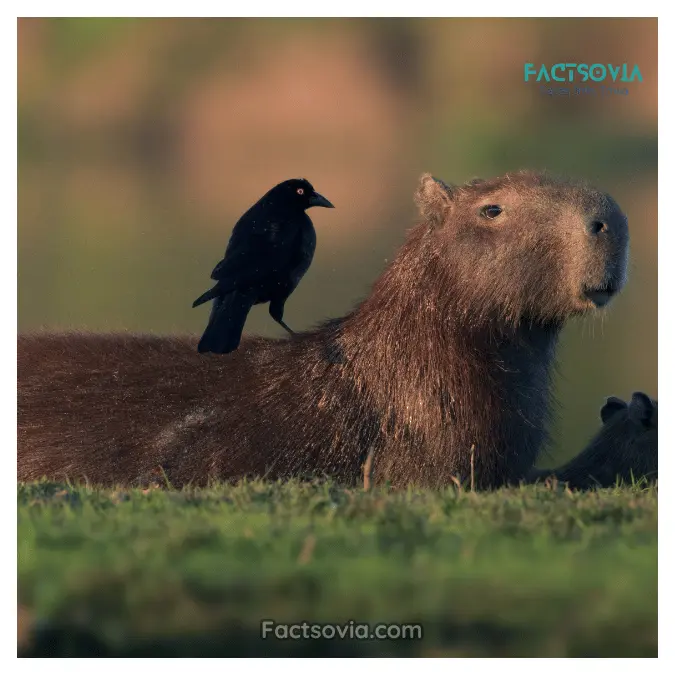
Capybaras, known as nature’s giant rodents, have formed some interesting and unusual relationships with other animals. One of their most notable companions is the bird species known as the greater ani.
These two creatures have a mutualistic relationship, where they both benefit from each other’s presence. The capybara acts as a host for the ani birds, allowing them to feed on the insects and parasites that reside in its fur.
In return, the ani birds provide the capybara with a cleaning service, removing these bothersome pests and keeping their host healthy and free from irritation.
Another fascinating partnership that capybaras have is with aquatic birds like egrets and herons. These birds perch on the capybara’s back, using them as a vantage point to spot potential prey in the water.
In this symbiotic relationship, the capybara benefits from the bird’s sharp eyesight and ability to detect fish and other small creatures. When the bird spots its prey, it will alert the capybara, which then dives into the water to catch it.
While the bird doesn’t directly benefit from this relationship, it is able to scavenge on any small fish or leftover food that the capybara may miss during its hunting expeditions.
Why Are Capybaras So Friendly? The Surprising Science Revealed
Capybara: Their Role in Ecosystems and Conservation Efforts
Capybaras play a vital role in the ecosystems where they live. As herbivores, they graze on a variety of plant species, helping to control vegetation growth and prevent overgrowth in their habitats. By doing so, capybaras contribute to maintaining the balance of plant life and promoting biodiversity.
In addition, their unique feeding behavior also aids the dispersal of seeds, as they consume fruits and plants and then excrete the undigested seeds in different areas, aiding in the expansion of plant populations.
Conservation efforts for capybaras focus on protecting their habitats and raising awareness about their importance in maintaining healthy ecosystems.
Several measures have been taken to safeguard these fascinating creatures, including the establishment of protected areas and the implementation of regulations against hunting and trade.
Additionally, educational programs aim to educate local communities and promote sustainable practices to reduce habitat destruction and ensure the long-term survival of capybara populations.
By safeguarding the ecosystems in which capybaras reside, we not only protect this iconic species but also contribute to the overall health and balance of the natural world.
19 Chill Facts About Capybaras
- Capybaras are built for hanging out near water. With webbed feet and waterproof fur, they love to kick back in lakes and rivers.
- These roly-poly guys can weigh up to 150 pounds! But they use their size for good with their mellow, non-violent ways.
- With those barrel-shaped bodies, capybaras can’t leap or climb well. So they stick to wandering slowly across grasslands, no rush required.
- A capybara’s tail works like a rudder, helping them steer smoothly through the water. It’s also a handy flyswatter for flicking away bugs.
- Their eyes, ears, and nostrils sit high on their heads. This helps capybaras stay aware while mostly submerged in water.
- Speaking of senses, capybaras have excellent hearing and scent. This allows them to quickly detect predators like jaguars and caimans.
- Capybaras live in big family groups of 10-30 members. Maybe that’s why they almost always seem relaxed – they have their family to depend on.
- These rodents are super vocal with each other. They use various barks, purrs, huffs, and whistles to communicate their chill mood.
- Baby capybaras are called pups and they have cute little wrinkly faces. Just hours after birth they can swim, eat grass, and join the mellow crew.
- Pups nurse only from their own mother. But the whole Capybara family watches over them playfully. Now that’s solidarity, man.
- Capybaras eat tons of grass and aquatic plants. With those specialized square teeth, they graze easily through the toughest stems.
- At rest, capybaras chew their cud to fully digest their food. Then their poop helps fertilize their grazing fields. Circle of life, my friends.
- It’s no myth – capybaras seriously love to chill in hot springs during winter. Can you blame them?
- In the heat, capybaras stay cool by taking mud baths. The mud also helps protect their skin from sun and bugs.
- When capybaras get into the zone grazing, they may enter a trance-like state. Pure meditative bliss, capybara style.
- Capybaras are even chill around predators. When threatened, they sound the alarm but don’t panic. Deep breaths, people.
- Different bird species ride on capybaras’ backs to pick at tick parasites. It’s the perfect symbiotic bro hang-out sesh.
- The capybara’s closest relatives are guinea pigs and rock cavies. But the capybara grew big while staying chill.
- Capybaras have been portrayed in the myths of native cultures like the Maya. These dudes are legends in chillness!
So stay cool and breathe deep, friends. The capybara’s zen lifestyle has a lot to teach us noisy humans about relaxing and taking ‘er easy.
Amazon and the Amazon logo are trademarks of Amazon.com, Inc, or its affiliates.
